Decimal to Binary – Definition With Examples
reviewed by Jo-ann Caballes
Updated on October 6, 2024
Brighterly team is committed to conveying math knowledge. That’s why we started to share free math theory explanation articles. Today, we’ll review one of the most complex algebra concepts, binary numbers, and actions with them.
They are essential in computer science because they are the fundamental language used by electronics and computers.
In this article, we’ll explain the decimal-to-binary formula, how to conduct math actions with binary numbers, and how to convert them back to decimal.
What is decimal to binary conversion?
Decimal to binary conversion is the action of transforming the number from one numeral system to another. While decimals are vital for daily human interactions, binaries are the lingua franca of all digital tools we use. Scientists program rockets to land on the Moon using binary code; your smartphone uses binary while uploading a TikTok video, and even your car uses binary to manage its digital components like a control panel.
Even when you write a code with words, the computer converts them to binary numbers. But before we dive into such a complicated topic, we need to understand the basics: decimal to binary conversion.
What is the decimal number system?
The decimal number system is the most commonly used numeral system in the world. Humanity has used it for thousands of years, and today, it acts as a universal numeric system throughout all countries. It is based on the number 10 (in Latin – “decem,” which reads as “diechim”), which is why it’s called “decimal.”
The decimal system uses ten digits to represent numbers:
- 0, 1, 2, 3, 4, 5, 6, 7, 8, 9
The value of a digit in a decimal number depends on its position or place value. Each place value is ten times greater than the one to its right:
Thousands → Hundreds → Tens → Ones → Decimal Point → Tenths → Hundredths → Thousandths → Ten-Thousandths → Hundred-Thousandths, etc.
For example, if your car drives 119 mph, you know you definitely exceed the speed limit since you are driving faster than one hundred miles per hour.
What is a binary number system?
The binary number system uses only two digits: 0 and 1. Those bits represent two states: on and off, light and dark, work and rest, etc. Binary code is the language of all computers and software, as they communicate not by words but by sharing binary code.
In software, the 0 and 1 values are called low and high. In hardware, 1 refers to a flow of electricity, while 0 represents no flow. This simplicity makes it ideal for representing information electronic devices.
Meanwhile, the binary system still has some similarities with a decimal: the value of a digit in a binary number depends on its position or place value. In this situation, the place value is twice the value of the one to its right:
1024→ 512 → 256 → 128 → 64 → 32 → 16 → 8 → 4 → 2 → 1
How to convert decimal numbers into binary numbers
Converting decimal numbers to binary involves a repeated division by 2. When you divide a decimal by 2, you check whether it can be represented with a 1 in the current place value (2n). Here is what a decimal-to-binary formula looks like:
- Start with your decimal number and divide it by 2.
- Write down the remainder. It will either be a 0 or a 1. If the number is divided evenly, the remainder is 0. In other cases, it’s a 1.
- Continue this process, dividing the quotient from the previous step by 2 and recording the remainder until your quotient is 0.
- Your binary number is the sequence of remainders, read from the bottom up.
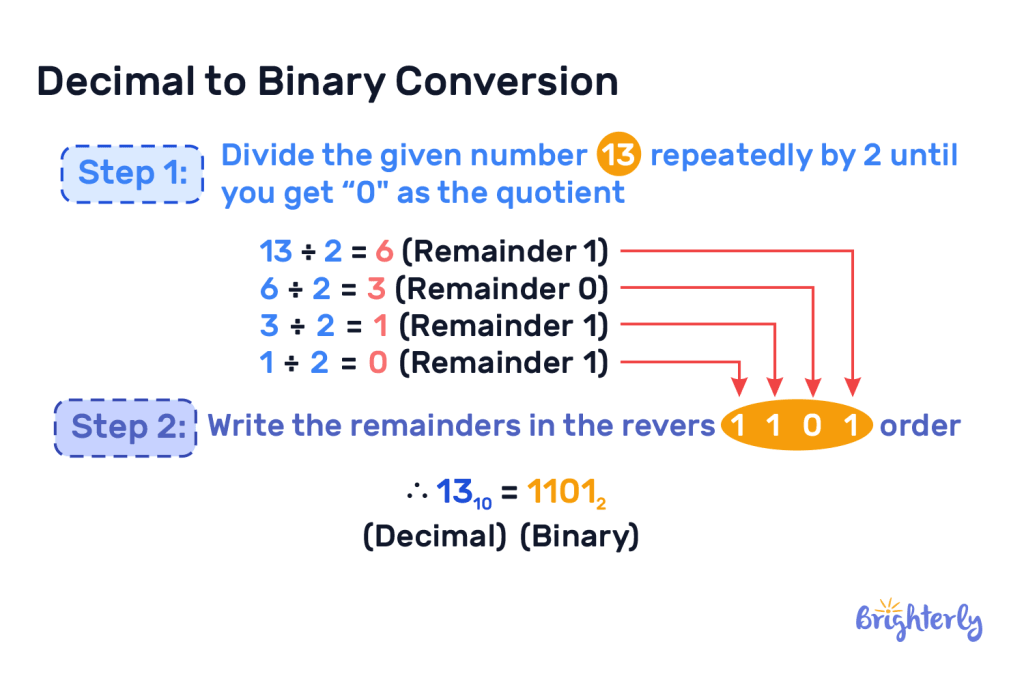
How to convert decimal fractions into binary
Converting a decimal fraction to binary is a more tricky process. Here, you need to be careful and multiply fractal parts until you see the results. Once converted, check whether this number is greater than or equal to that place value’s equivalent in decimal. If it’s equal or bigger, you should put 1. Otherwise, you should put a 0.
We understand that it may sound confusing. Thus, we show you the decimal-to-binary converter with step instructions.
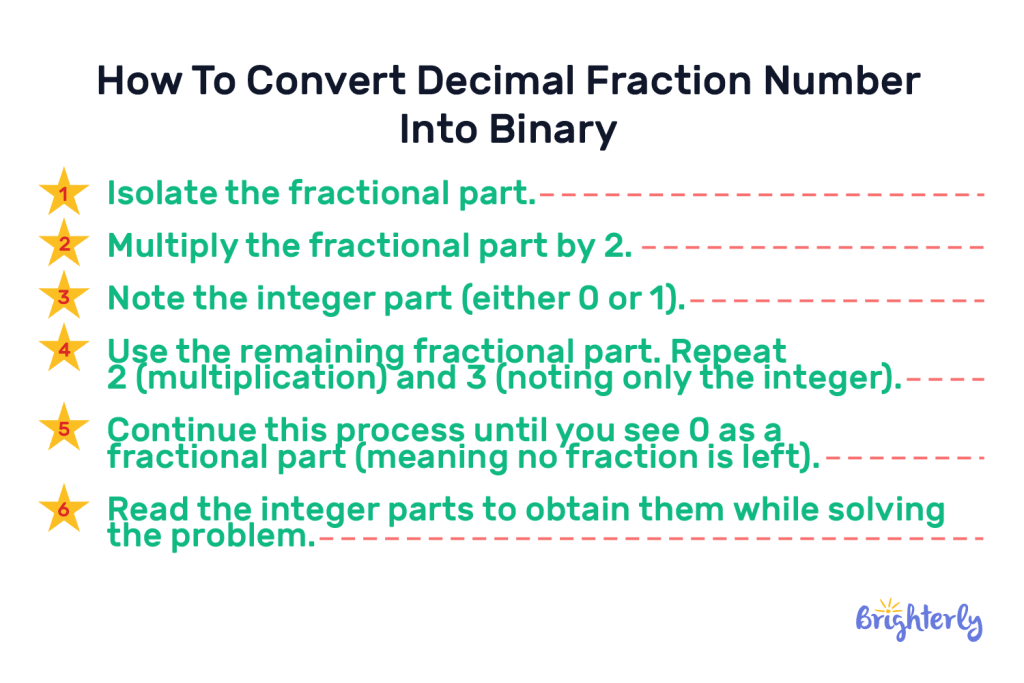
Many mathematicians prefer to end on the fifth or seventh iteration. In most cases, there is no need to be super precise. Rough estimation is fine in math classes, especially when dealing with continued fractions.
Let’s see how we can transform 0.5 in binary. Don’t be afraid, as it is easier than you thought. All you need to do is to multiply your decimal number (0.5) by 2. If it has some numbers after the decimal point, you need to repeat it until you see the whole number. Once there is nothing after the decimal point, the calculation is over.
- Let’s multiply our number by 2. 0.5 x 2 = 1.0
- As you see, the integer part is 1. It means that it will be our first digit after the binary point.
- Determine whether you have other numbers after the point.
- The remaining fractional part is 0. It shows that our conversion is complete, as there is nothing to multiply. We can’t multiply by 0.
- Therefore, 0.5 in binary is 0.1.
That’s all! As we said, it was easy! We’ll examine more complex tasks like 0.3 in binary in the practice section.
How to calculate binary to decimal
To calculate a binary number to decimal, apply the place value method. Multiply each place value of 2. In other words, you just reverse the previous conversion.
- Identify the place values for each digit in the binary number. The rightmost digit is in the 20place, the next digit to the left is in the 21 place, and so on.
- Multiply each digit by its place value.
- Add the products to determine the result in decimal numbers.
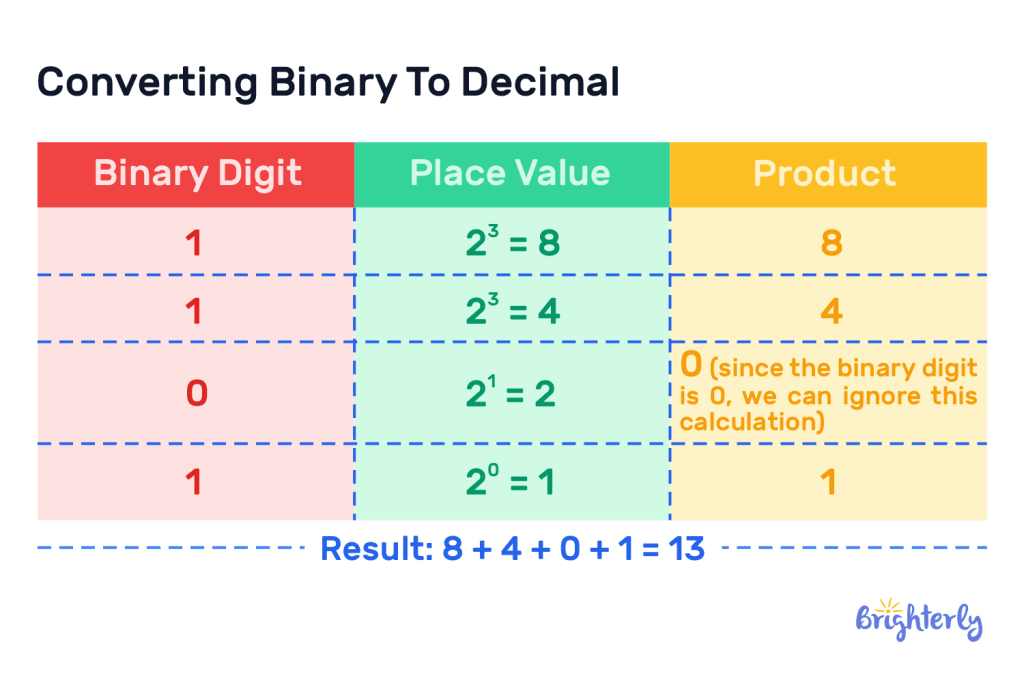
It’s the easiest way to determine the decimal equivalent of the binary number.
Decimal to Binary Conversion Table
We create a decimal-to-binary conversion table to ease your math journey. We know that constant conversion may be tiring. To ease your estimates, we gather some of the results in the cheat sheet. If your kid has an exam, they can memorize this table.
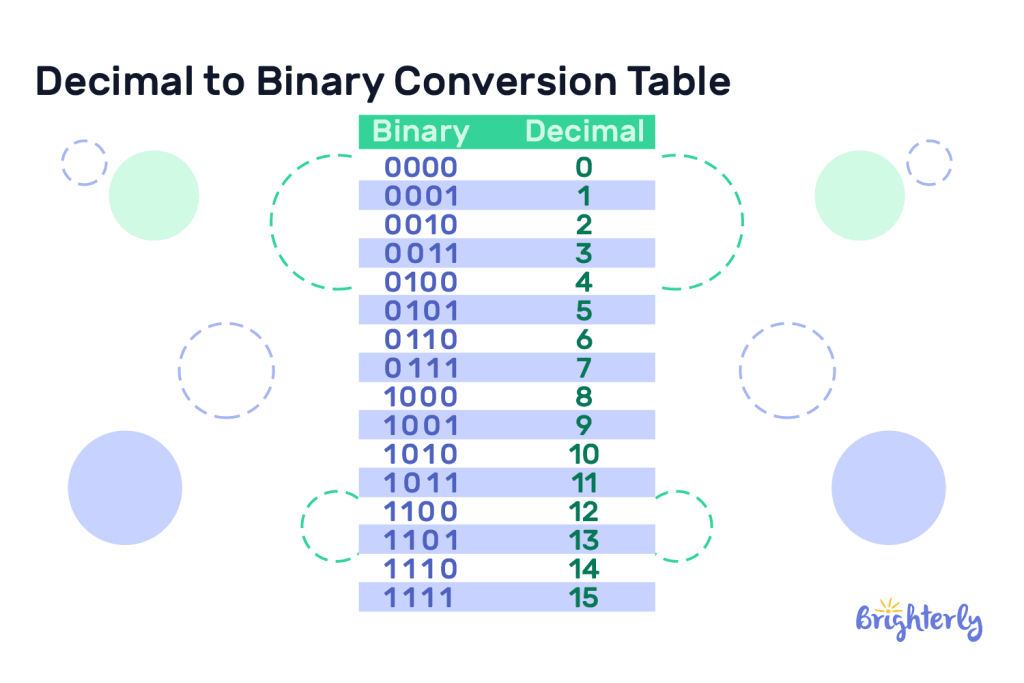
How to find binary number
You don’t need to constantly transfer numbers in and out of different numeric systems, as you can easily find binary numbers. You can perform all basic actions with those numbers, without converting them to decimal or HEX systems.
Later, you can try converting binary to decimal to ensure that you correctly calculate a math problem. Results should align. If you get 111100 as the answer to your binary problem, once you convert it to decimal, you should see 60.
Binary addition
Use binary addition to add two binary numbers without a conversion. Here are the main rules for it.
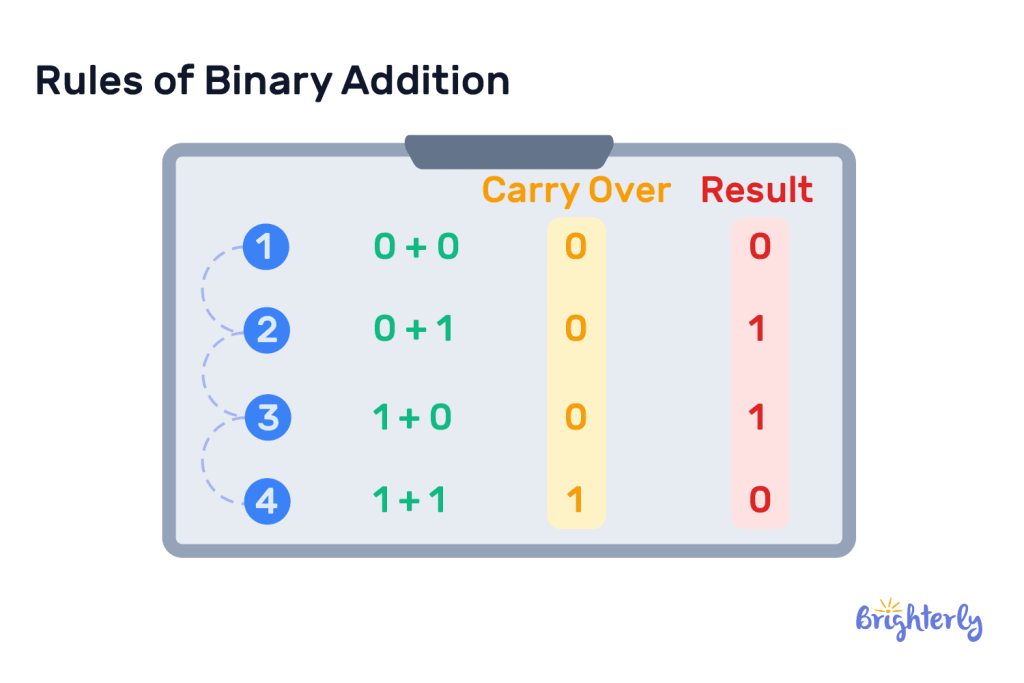
We know that theory is not enough, so we’ve gathered examples of solved math tasks with binary numbers. Let’s start with the basics by adding 1010 with 1001. Here is how it will look for you.
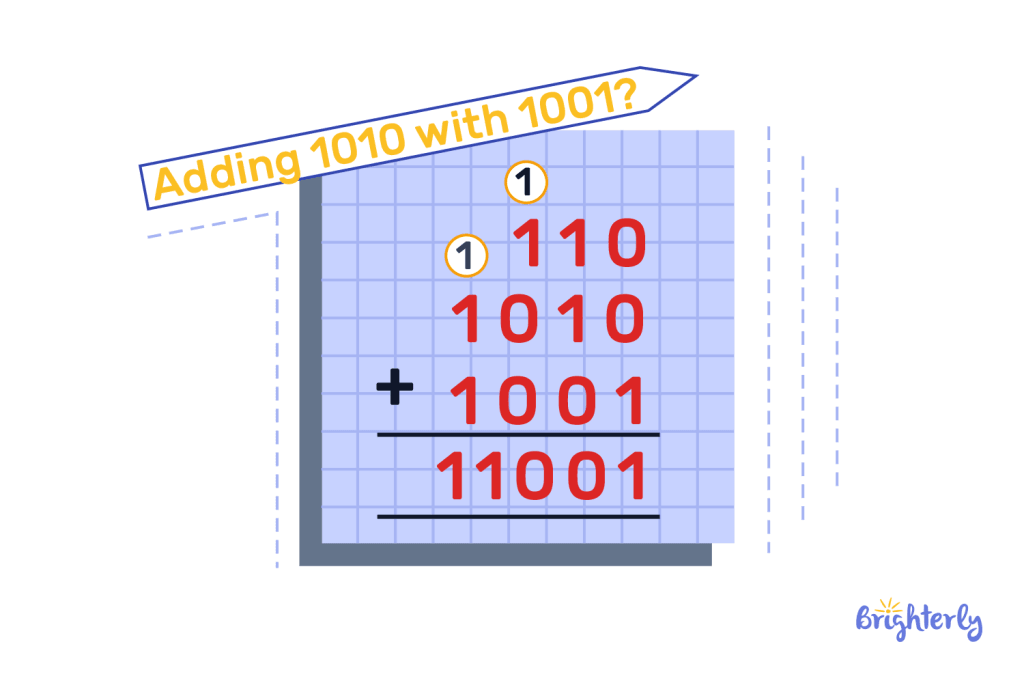
Binary Subtraction
If you need to subtract two binary numbers, use the binary subtraction rules.
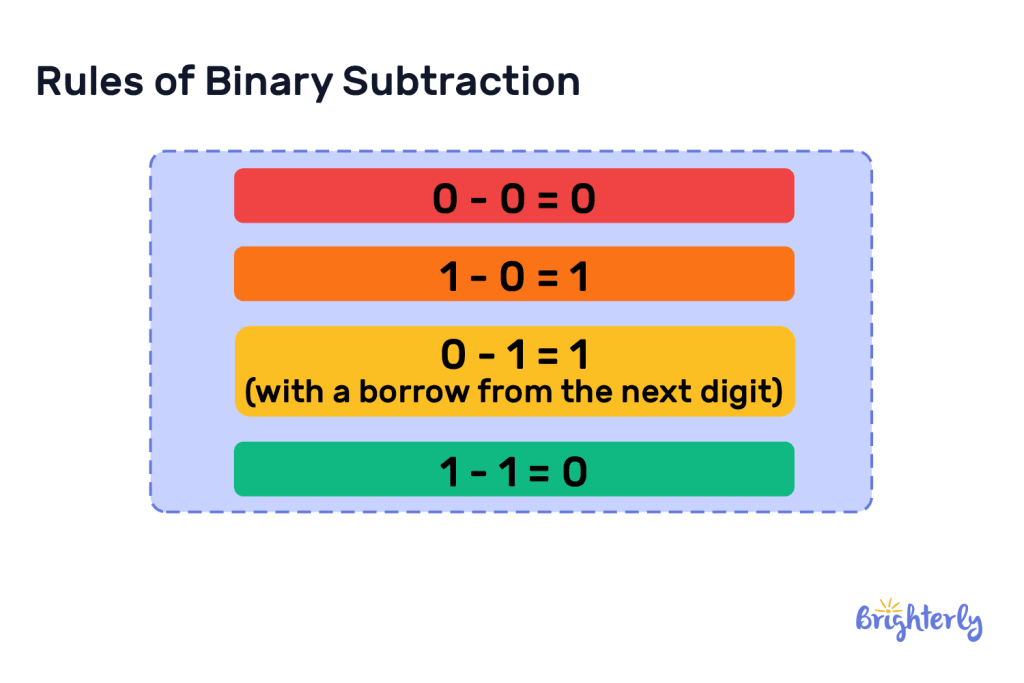
Let’s set a subtraction example. As you see, the math approach is generally the same.
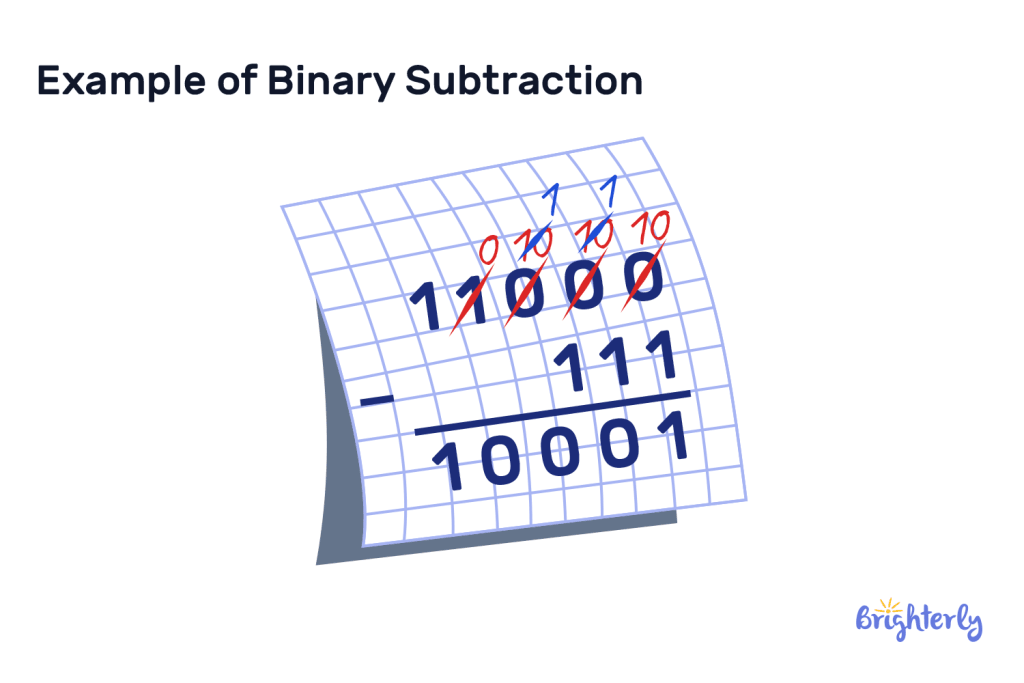
Binary Multiplication
Binary multiplication looks similar to the traditional long multiplication but with binary rules. And the main rule is that when you use 0, the result will always be a 0. It will take at least a few hours to understand the logic behind it. That’s totally fine, as binary multiplication is a complex action.
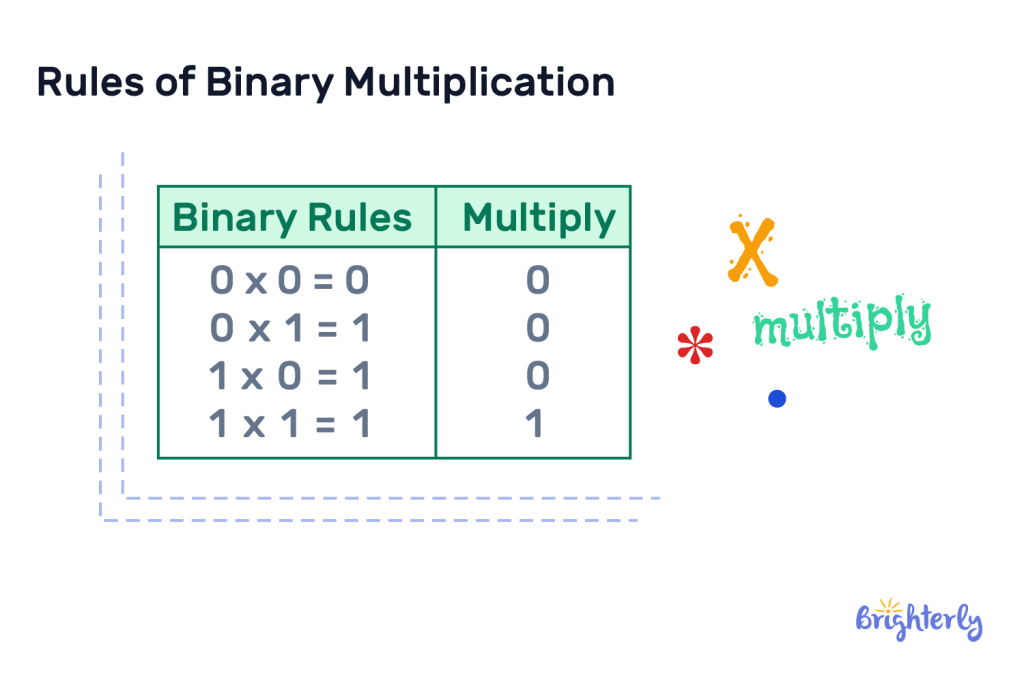
Suppose that we need to multiply 27 (11011) by 5 (101). Here is how it looks in a binary system. As we said, any action with 0 will result in 0. In the end, we got 135 (10000111). You can check yourself by converting numbers from one system to another.
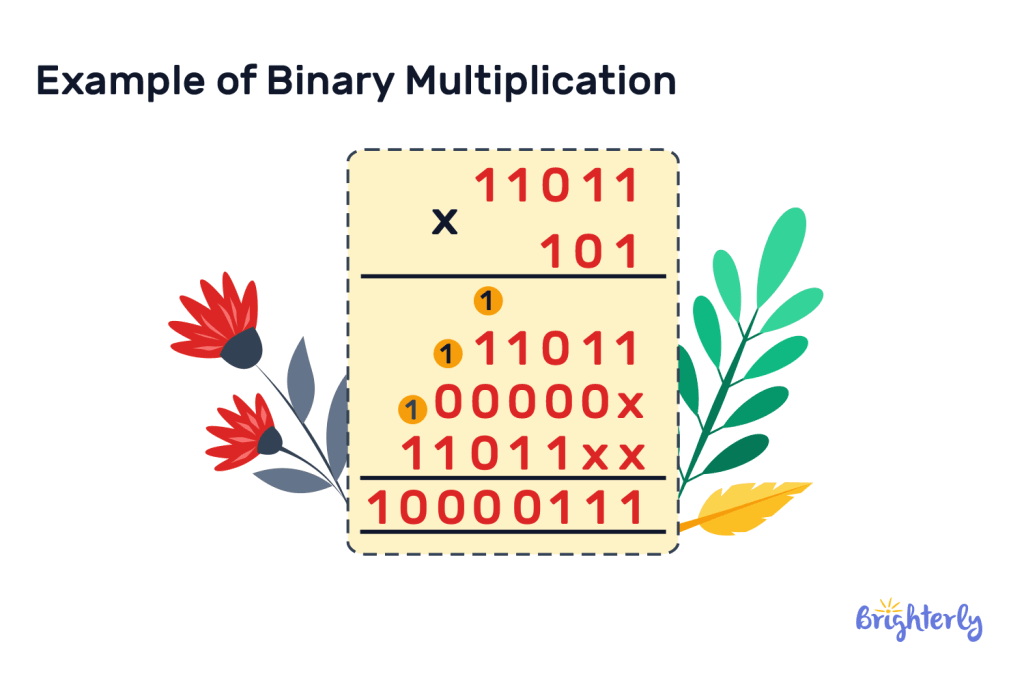
Binary Division
Binary division is the most complex action in this article. It may take even days to grasp its logic. Don’t rush your kid, as even adults may get confused with binary division.
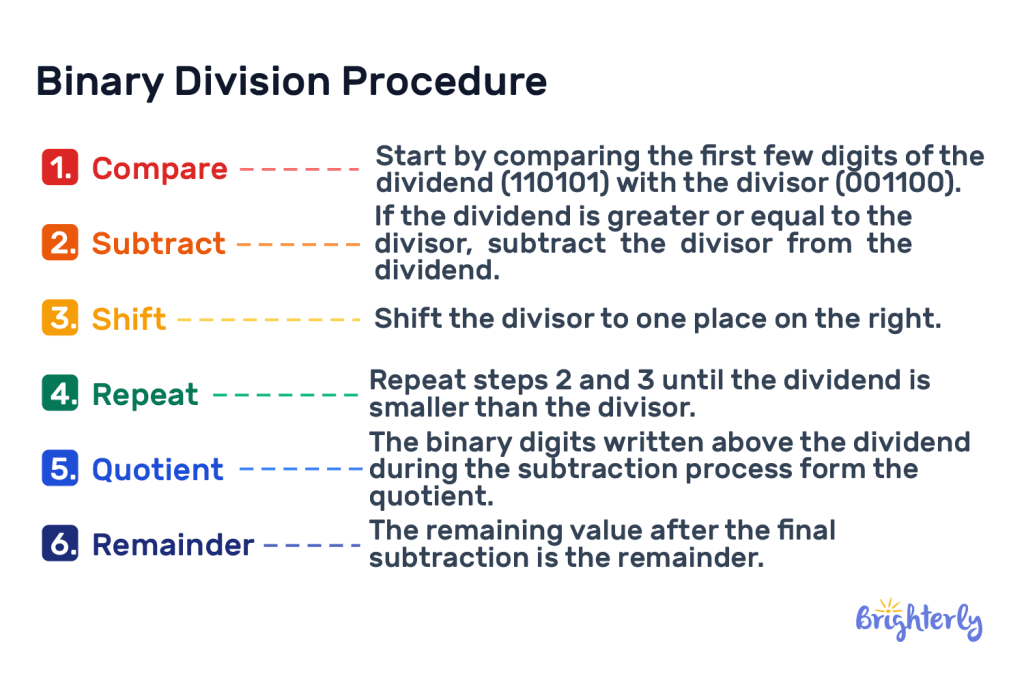
We understand that even the most detailed word description may not show all the details of this math action. That’s why we’ve shown you a graph explanation of this rule.
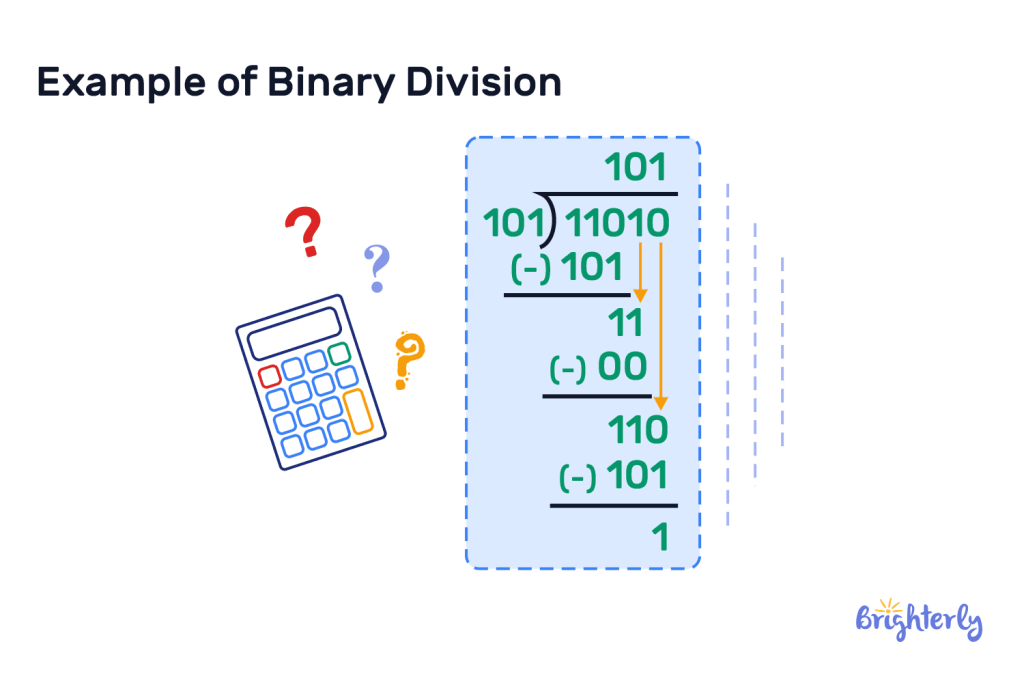
While calculating approximate binary division, remember that you can’t divide by zero. It’s basically meaningless.
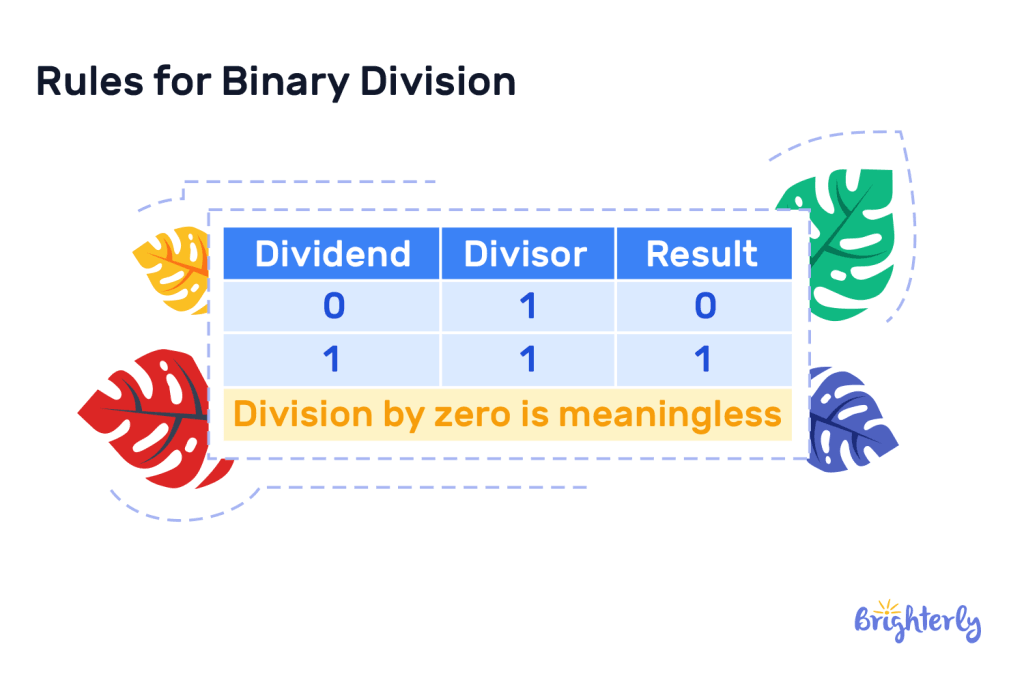
Solved Math Tasks: Examples
Converting decimal to binary is not easy, so we showed you some examples of solved math tasks. That way, you’ll see how to implement a formula to convert decimal to binary in real life:
In the first case, we’ll convert 25 to binary. It’s an odd number, so its transition may be tricky for beginners. But with Brighterly you can easily convert decimal to binary.
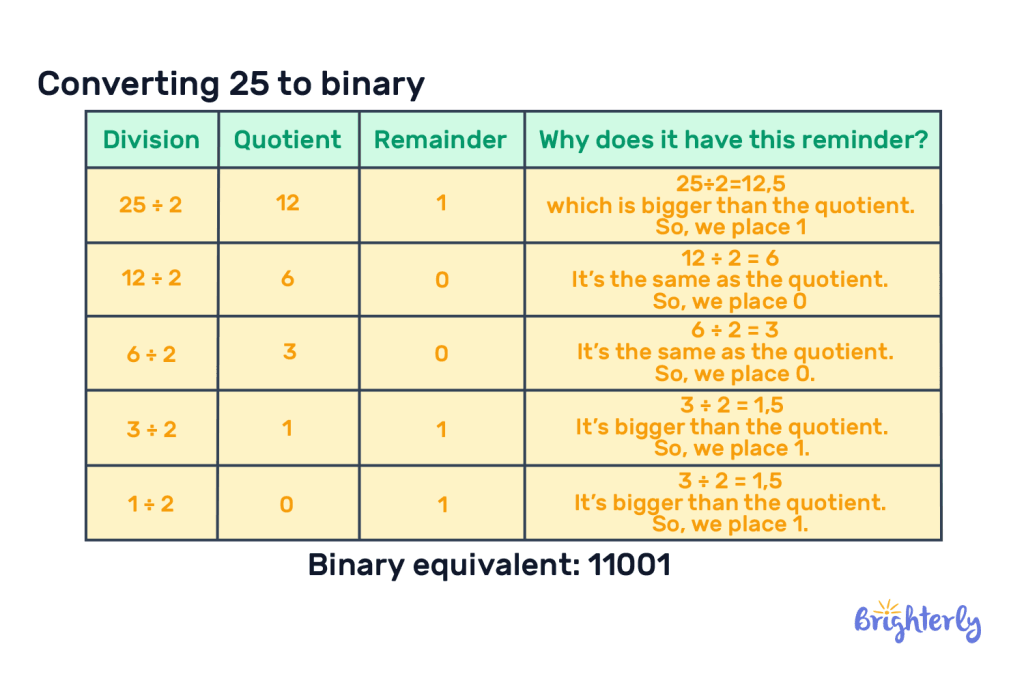
Therefore, 25 in decimal is equivalent to 11001 in binary. As you can see, this transition is more logical than it initially seemed.
Fractions are known as challenging numbers to calculate even in decimals. Meanwhile, they become even more tricky in binary. Let’s examine how to convert 0.275 to binary.
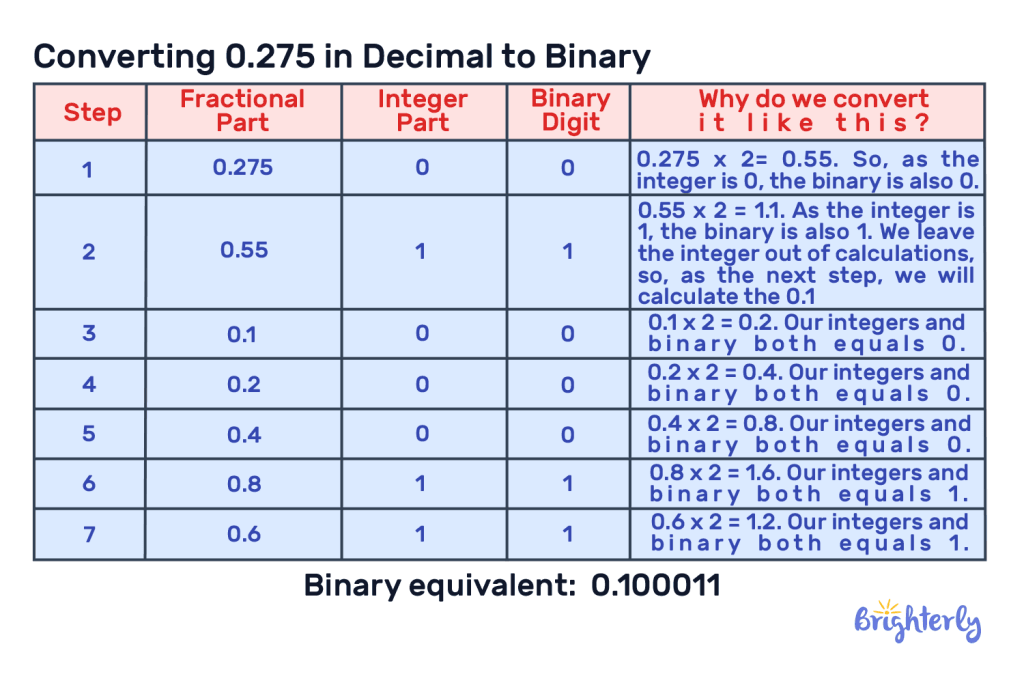
So, 0.275 in decimal is approximately equivalent to 0.100011 in binary. As you see, this conversion can be almost infinite. That’s why mathematicians agreed to stop at fifths or sevenths number after decimal point.
Decimal to Binary: Practice Math Problems
Decimal to Binary: Worksheets
Now that you have mastered converting binary to decimal and vice versa, it’s time to test your math knowledge. We’ve created a range of math worksheets featuring binary numbers and related math concepts to help you practice and apply your knowledge:







